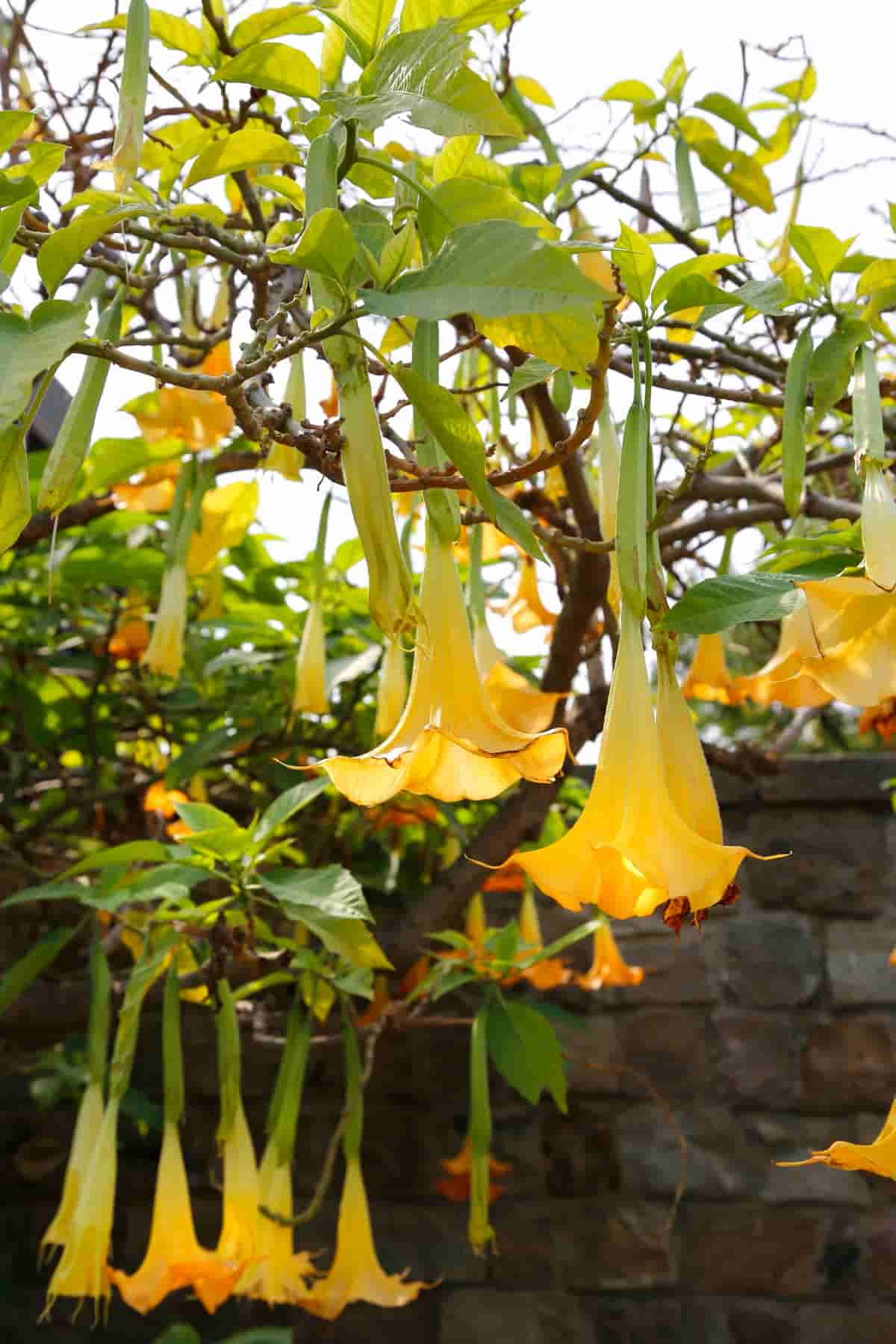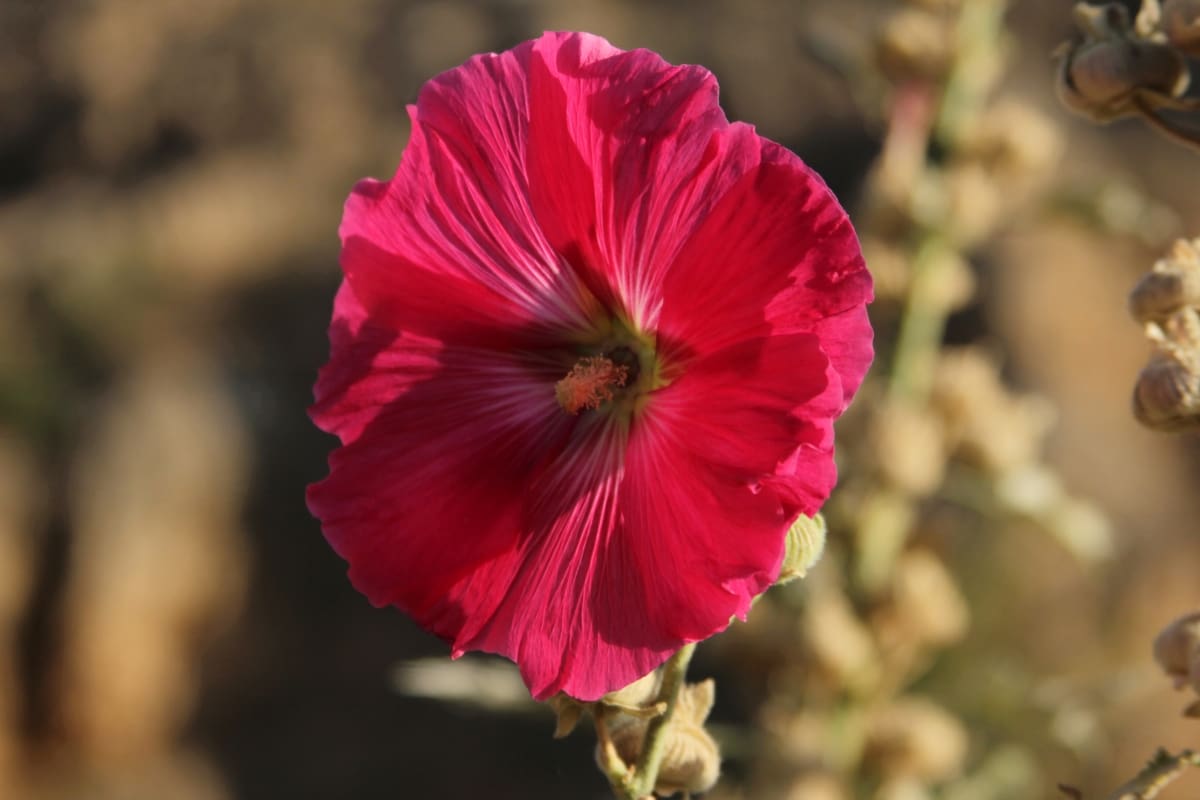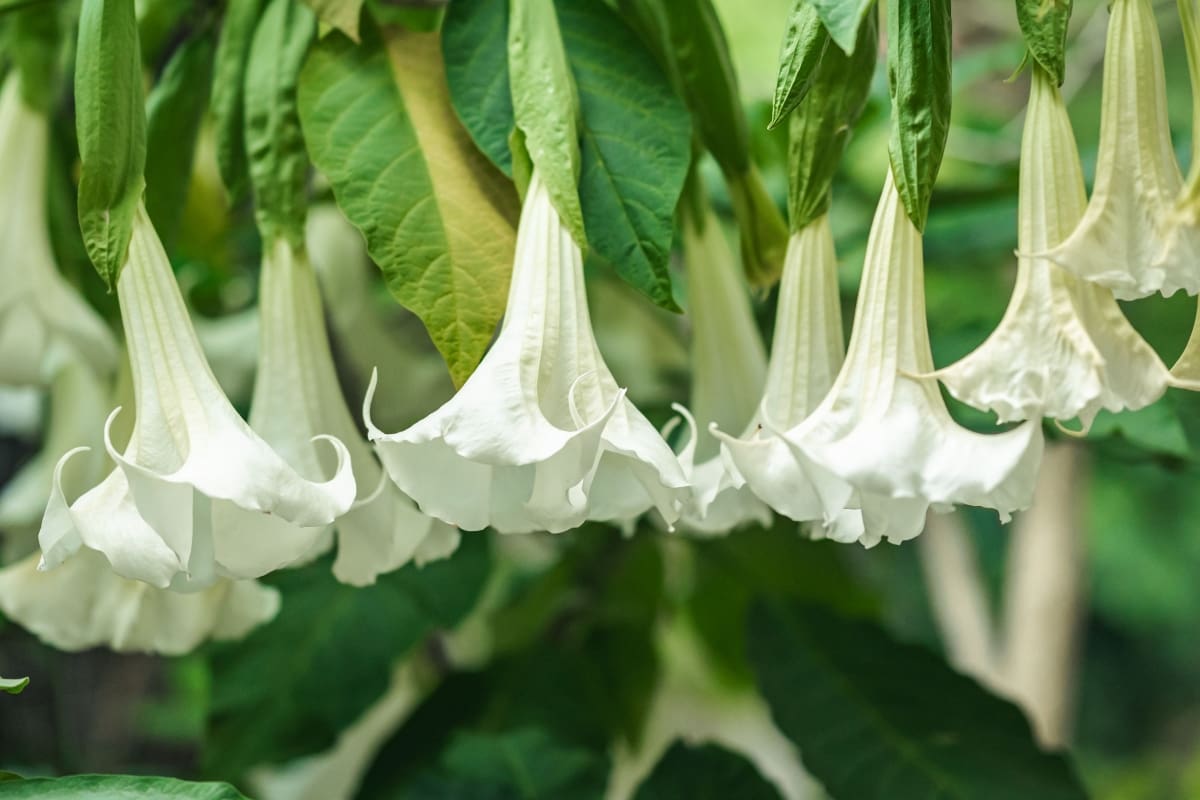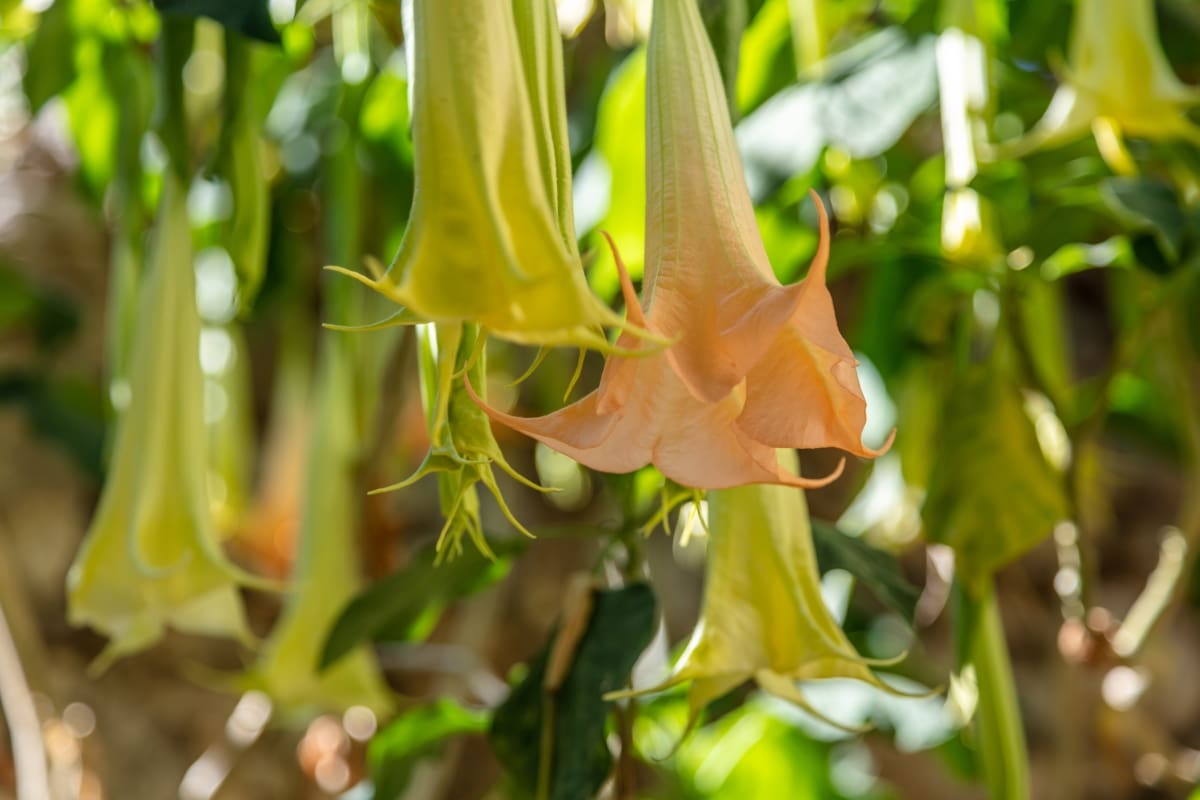Are you eagerly awaiting the stunning blooms of your Angel Trumpet plant, only to be met with disappointment? Fear not, as we delve into the top 10 reasons why your Angel Trumpet may not be blooming as expected. From environmental factors to cultural practices, we’ll explore remedies and treatments to revive your plant’s blooming potential.

Angel Trumpet Plant Characteristics
The Angel Trumpet Plant, or Brugmansia, is a perennial shrub known for its distinctive large, pendulous flowers that resemble trumpets. These plants are native to the subtropical regions of South America and are admired for their dramatic floral display and sweet fragrance that intensifies at night.
Angel Trumpets can grow up to 20 feet in height and come in a variety of colors, including white, yellow, pink, orange, and red. They thrive in well-drained soil with full to partial sun exposure and require regular watering. Despite their beauty, all parts of the Angel Trumpet Plant are highly toxic if ingested, containing alkaloids such as scopolamine and atropine. Caution should be exercised around pets and children.
Angel’s Trumpet Quick Care Overview
| Scientific Name | Brugmansia |
| Classification | Tropical Plant |
| Common Names | Angel Trumpet, Angel’s Trumpet |
| Hardiness | Zones 8-11 |
| Temperature | 60-90°F (15.5-32°C) |
| Flowers | Red, yellow, pink, peach, gold, white; blooms late spring-fall |
| Light | Full sun, bright light indoors |
| Water | Keep soil evenly moist; avoid overwatering |
| Humidity | Average-high |
| Fertilizer | Flowering plant food in spring-summer |
| Soil | Well-drained, fertile, aerated |
| Common Pests | Whiteflies, spider mites, cabbage worms, aphids |
Why Is My Angel Trumpet Plant Not Blooming?
Age
- Angel trumpet plants typically need 2 to 3 years to mature before they can bloom.
- Verify the plant’s age if purchased from a grower, as younger plants may not bloom.
Disease
- Various diseases can hinder blooming, often due to poor care practices.
- Treatment may be possible for some diseases, while viral infections often require plant destruction.
Malnutrition
- Insufficient nutrients can hinder blooming and overall plant health.
- Look for signs of malnutrition, like leaf discoloration or stunted growth.
- Rule out root rot as a cause and consider switching to liquid fertilizer for better absorption.
Being Rootbound
- Container-grown plants are prone to becoming rootbound, inhibiting blooming.
- Repot young plants annually and adults every 2 to 3 years to prevent rootbound conditions.
- Check for root damage and provide fresh soil if necessary.
Underwatering
- Angel trumpet plants require adequate water, around 4 to 5 inches of rainfall per week.
- Underwatering stress the plant and hinder blooming, but avoid overwatering to prevent fungal disease or root rot.
- Use the soak-and-dry method to water, ensuring soil moisture reaches 2 to 3 inches deep.
In case you missed it: How to Grow Rose Plants from Cuttings to Harvest: Planting Guide for Beginners

How to Grow Angel’s Trumpet
- Angel’s trumpet plants thrive in zones 8-11 and require full sun, fertile soil, and average-high humidity.
- Can be grown in containers indoors and outdoors, provided with adequate sunlight and space for their potential height of 10-20′.
Angel’s Trumpet Plant Care & Growing Instructions
- Light: 6-8 hours of direct sunlight daily, supplemented with grow lights indoors.
- Water: Keep soil evenly moist; avoid overwatering, especially in containers.
- Humidity: Maintain average to high humidity levels, supplementing with humidifiers indoors if necessary.
- Temperature: Ideal range between 60-90°F (15.5-32°C), protect from extreme cold or heat.
- Fertilizer: Feed regularly with organic flowering plant fertilizer during spring-summer.
- Soil: Well-drained, loamy soil mix, suitable for containers or garden beds.
Transplanting & Repotting
- Transplant or repot during late winter or early spring, every other year as needed.
- Prune branches and deadhead flowers regularly to encourage new growth and blooming.
Brugmansia Pest Control Tips
- Monitor for common pests like whiteflies, aphids, spider mites, and cabbage worms.
- Treat infestations promptly with organic insecticidal soap or neem oil.
- Maintain good plant hygiene to prevent pest outbreaks.
Dormancy
- Angel’s trumpet may enter dormancy in cold temperatures, during which growth halts, and leaves drop.
- Protect plants from freezing temperatures or bring them indoors during winter.
Angel’s Trumpet Propagation Tips
- Propagate using suckers, stem cuttings, or seeds, with stem cuttings being the most common method.
- Root cuttings in damp soil and provide warmth and shade until rooted, then transplant or pot up.
Troubleshooting Common Problems
- Yellowing Leaves: Check for pests or overwatering, and adjust watering practices accordingly.
- No Blooming: Ensure proper care with adequate light, water, temperature, and fertilization; consider repotting or root pruning if containerized.
In case you missed it: Growing Lotus Indoors from Seed, Tubers in Containers

10 Reasons Why Your Angel Trumpet is Not Blooming
Insufficient Light
- Issue: Angel trumpet plants require ample sunlight to bloom adequately.
- Remedy: Place the plant in a location where it receives at least 6- 8 hours of direct sunlight daily. If grown indoors, use grow lights to supplement insufficient natural light.
Improper Watering
- Issue: Over or underwatering can stress the plant and inhibit blooming.
- Remedy: Use the soak-and-dry method to water, ensuring soil moisture reaches 2 to 3 inches deep. Avoid overwatering to prevent root rot and underwatering to prevent stress.
Nutrient Deficiency
- Issue: Lack of essential nutrients can hinder blooming and overall plant health.
- Remedy: Fertilize the plant with a balanced fertilizer formulated for flowering plants. Ensure proper nitrogen, phosphorus, and potassium levels for optimal growth and blooming.
Incorrect Pruning
- Issue: Improper pruning can remove potential blooming sites or damage the plant.
- Remedy: Prune selectively to remove dead or diseased branches, encouraging new growth and blooming. Avoid excessive pruning, especially during the blooming season.
Pest Infestation
- Issue: Pest infestations like aphids, spider mites, or whiteflies can damage the plant and inhibit blooming.
- Remedy: Monitor the plant regularly for signs of pests and treat infestations promptly using natural remedies like neem oil or insecticidal soap. Maintain a clean growing environment to prevent future infestations.
Disease Issues
- Issue: Fungal or bacterial diseases can weaken the plant and prevent blooming.
- Remedy: To reduce the risk of disease, practice good sanitation practices, including proper watering and ventilation. Treat infections with appropriate fungicides or bactericides as needed, following label instructions carefully.
Inappropriate Soil Type
- Issue: Poor soil drainage or composition can affect nutrient uptake and blooming.
- Remedy: Use well-draining, loamy soil enriched with organic matter to promote healthy root growth and blooming. To improve drainage, amend heavy clay soils with sand or perlite.
Temperature Stress
- Issue: Extreme temperatures, either too hot or too cold, can stress the plant and hinder blooming.
- Remedy: Maintain consistent temperatures between 65°F, 80°F (18°C -27°C) during the day and above 50°F (10°C) at night. Protect the plants from frost or excessive heat with mulch or shade cloth.
Plant Age
- Issue: Young angel trumpet plants may only bloom once they reach maturity, typically 2 to 3 years old.
- Remedy: Be patient and allow the plant to mature before expecting it to bloom. During this period, ensure proper care and maintenance to support healthy growth.
Over-Fertilization
- Issue: Excessive fertilizer application can lead to nutrient imbalances, root burn, and blooming inhibition.
- Remedy: Follow recommended fertilization guidelines and avoid over-fertilizing. Use slow-release fertilizers or dilute liquid fertilizers to preent nutrient buildup in the soil.
In case you missed it: 11 Strategies to Make Jasmine Plants Bloom: Practical and Proven Methods

Addressing issues such as insufficient light, improper watering, nutrient deficiency, and pests can help revive your angel’s trumpet plant’s blooming potential. With proper care, including adequate sunlight, water, nutrients, and pest control, your plant can flourish and produce its characteristic beautiful blooms.
- Flower Garden Designs and Layouts for Beginners
- Planting and Spacing Techniques in Papaya: A Beginner’s Guide
- Growing Gold: Essential Techniques for Planting Pineapples
- How to Make Kalanchoe Plant Bushy: Home Remedies and Solutions
- 11 Reasons Why Your Gardenia is Not Blooming: Home Remedies and Solutions
- Eco Elegance: The Guide to Designing a Drought-Tolerant Landscape
- Gardening on a Slope: Strategies for Hillside Landscaping
- Nourish and Flourish: Top Organic Mulches for Thriving House Plants
- Everything You Want to Know about Indian Mogra Flower: Discover Uses and Growing